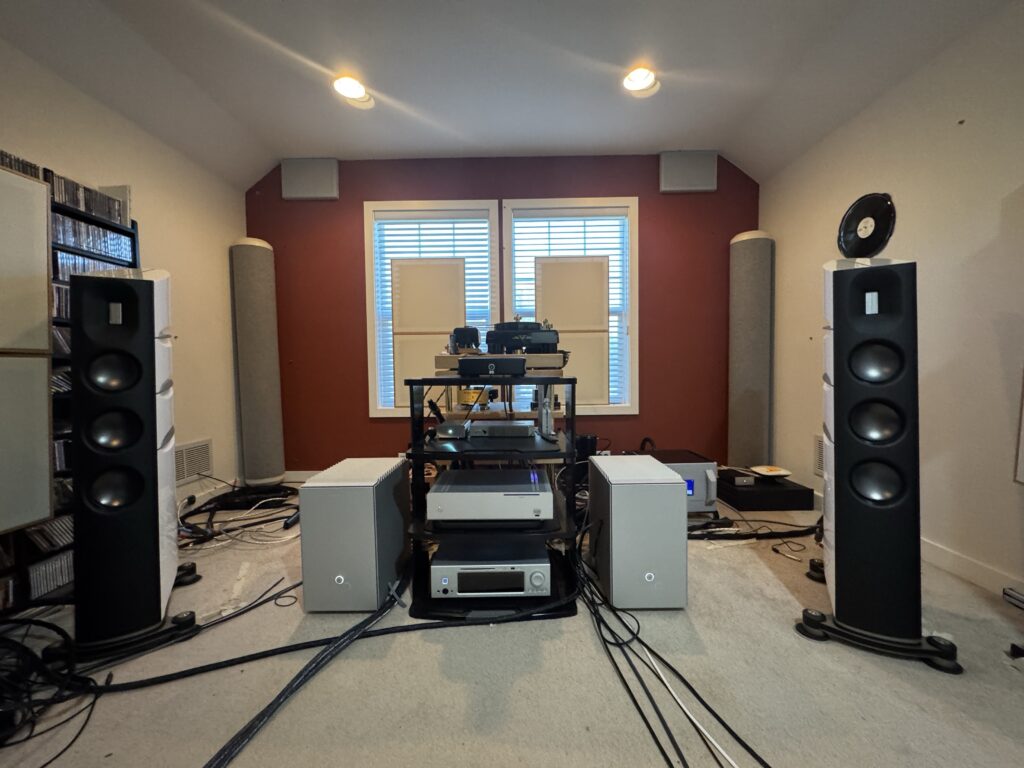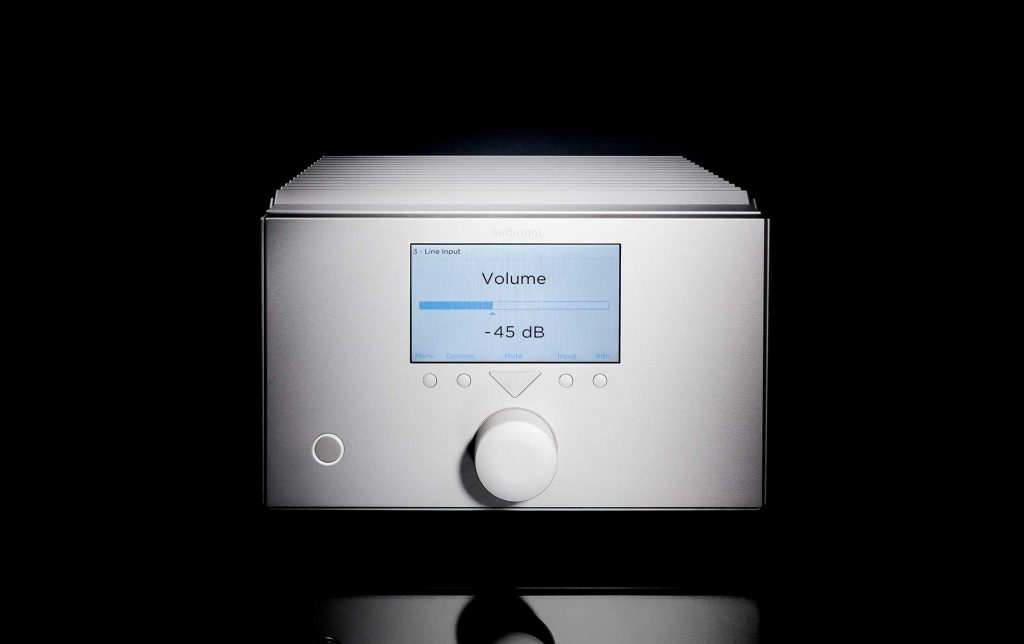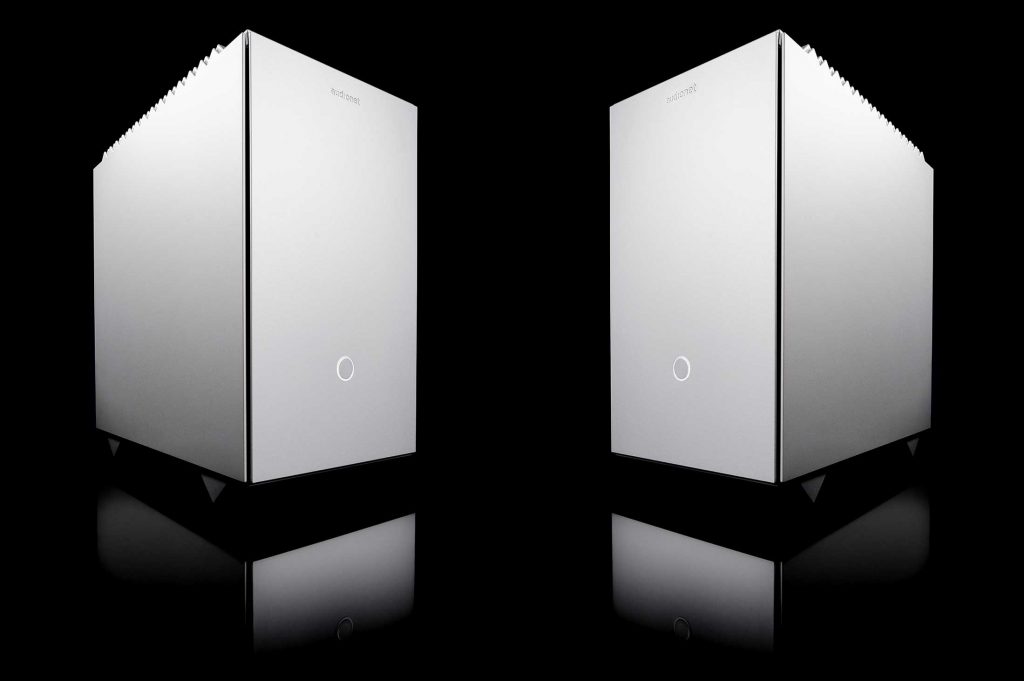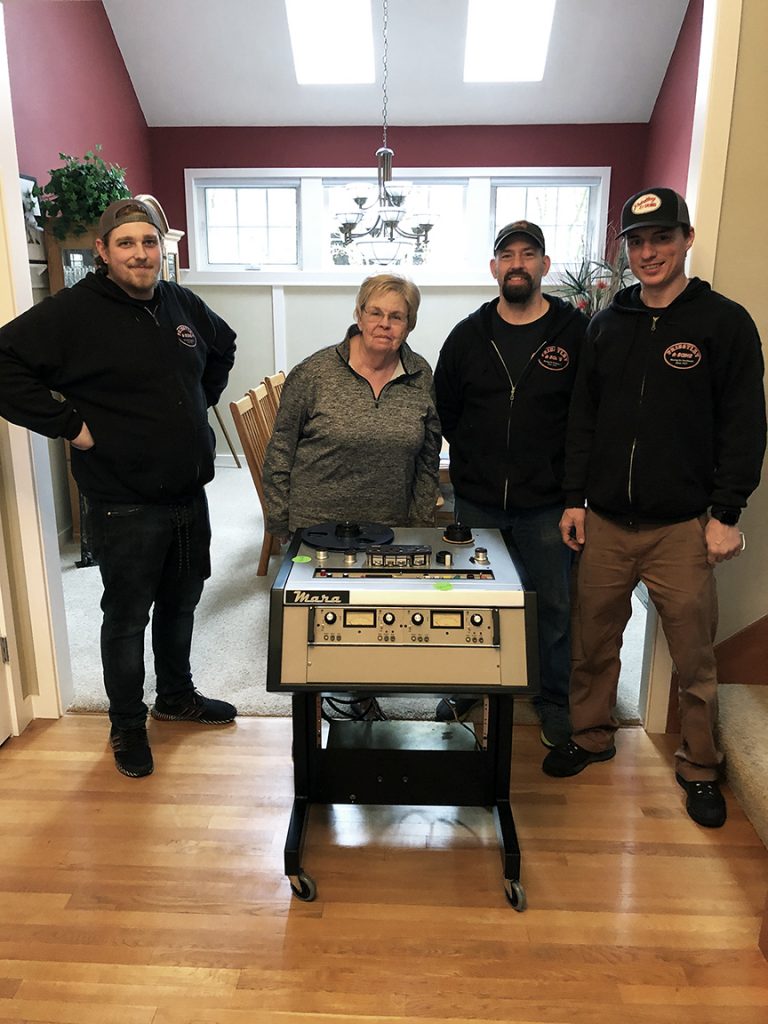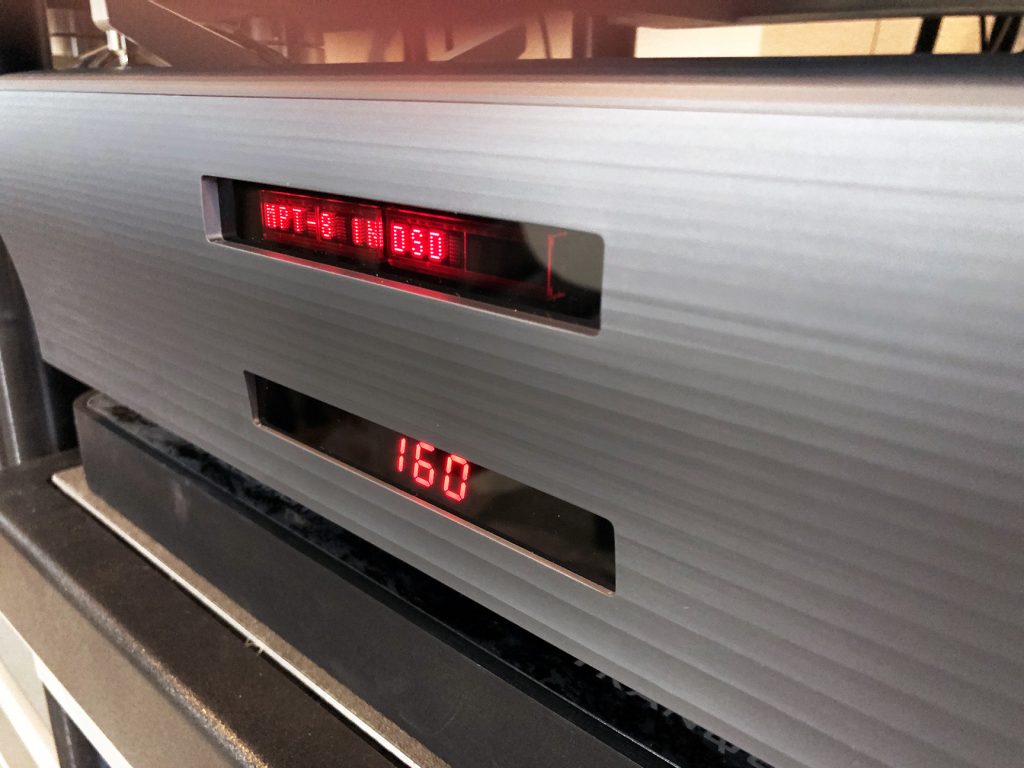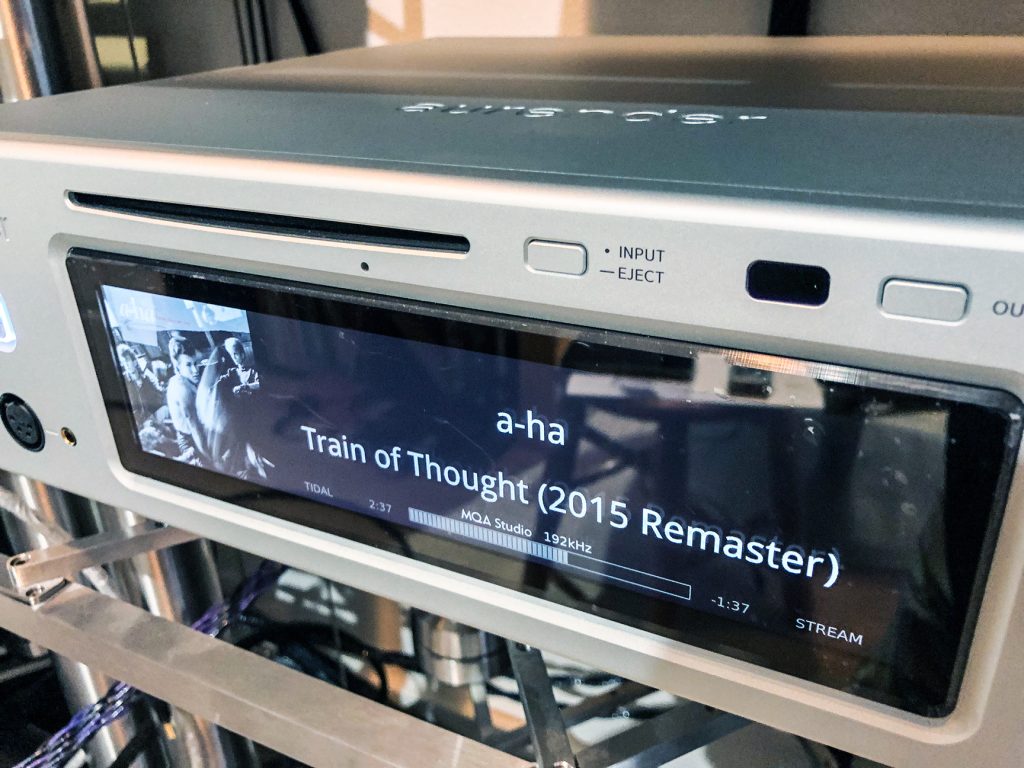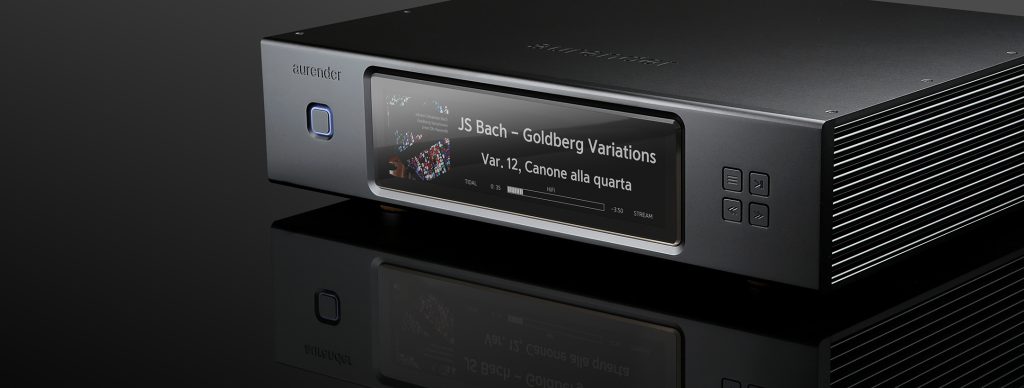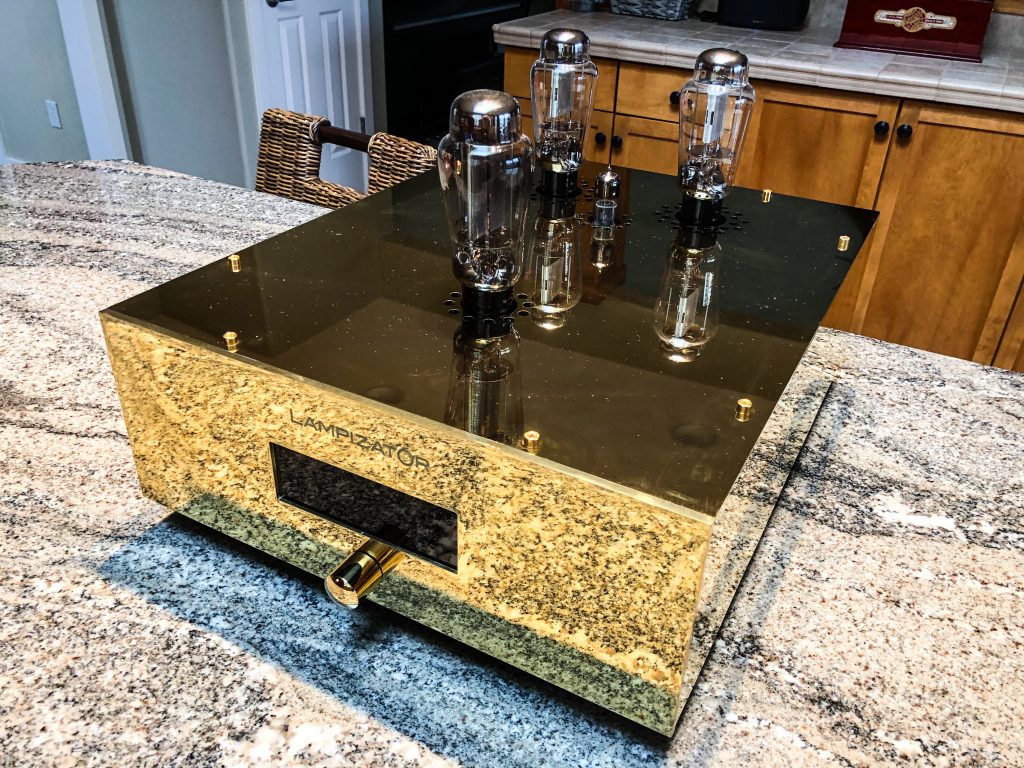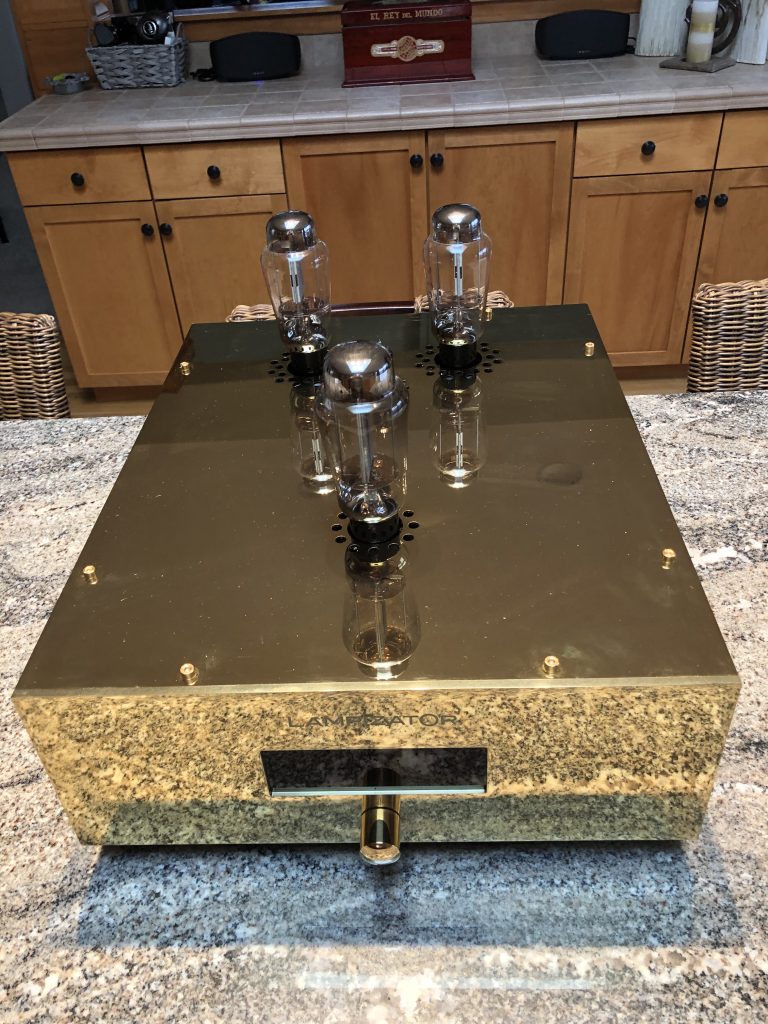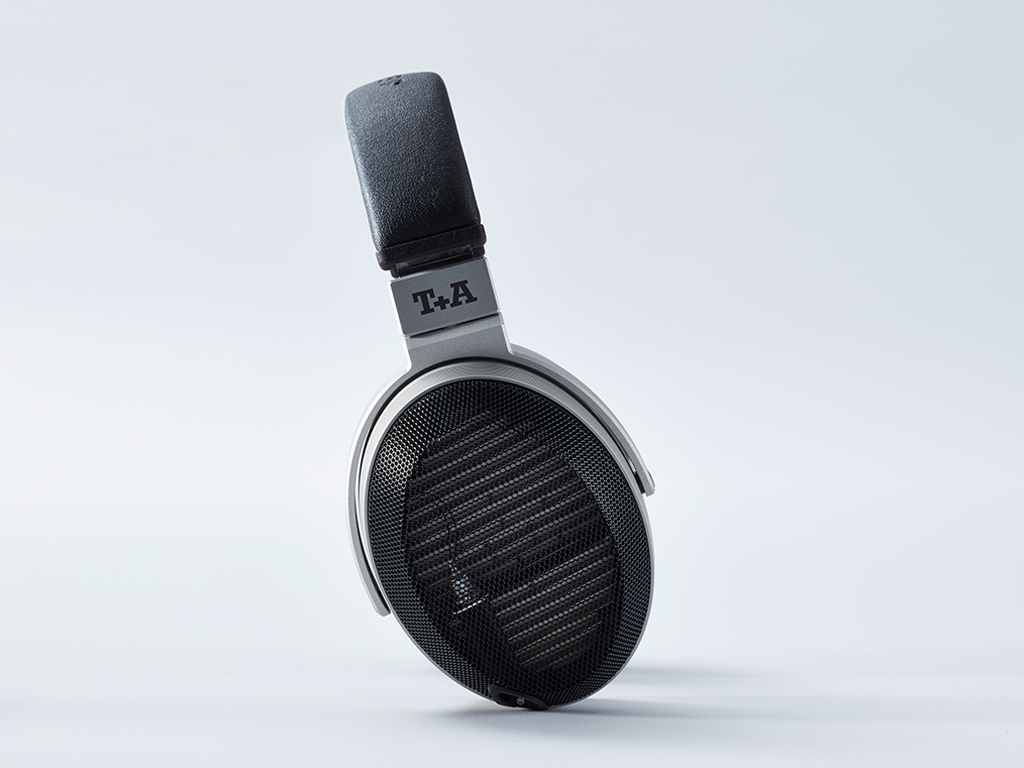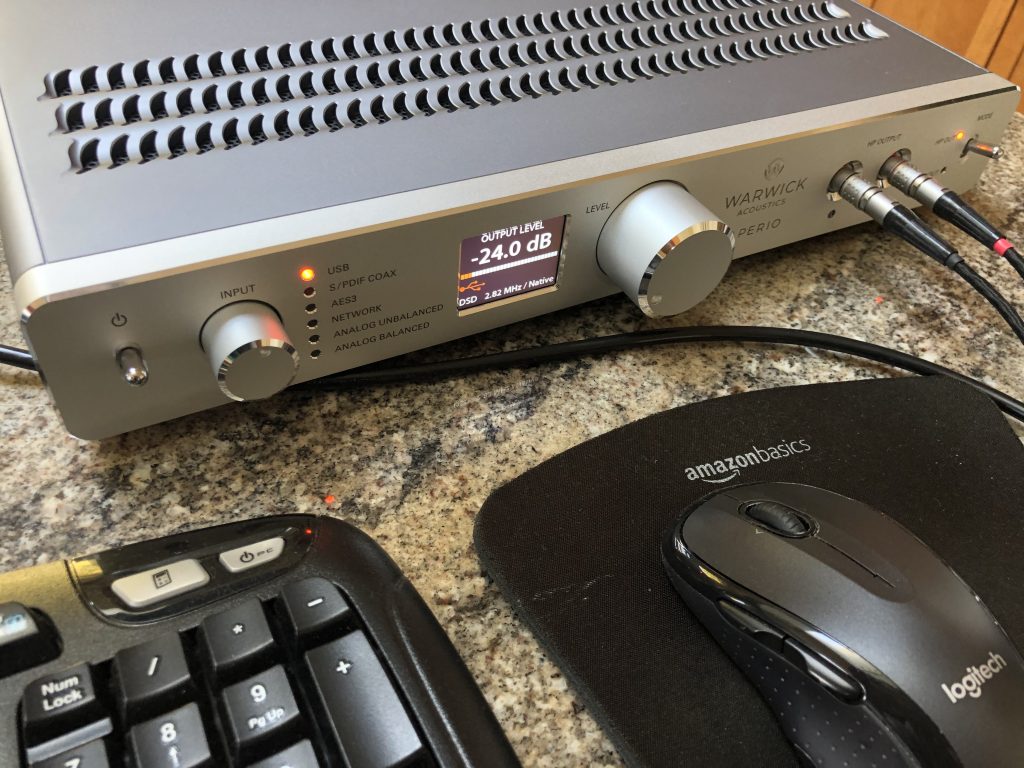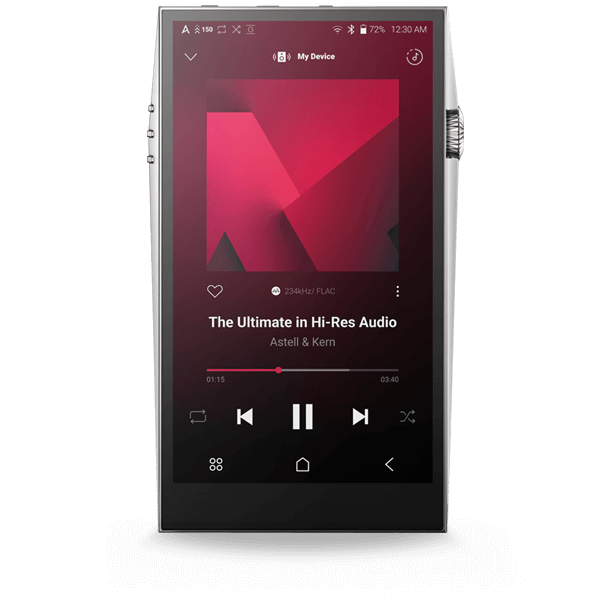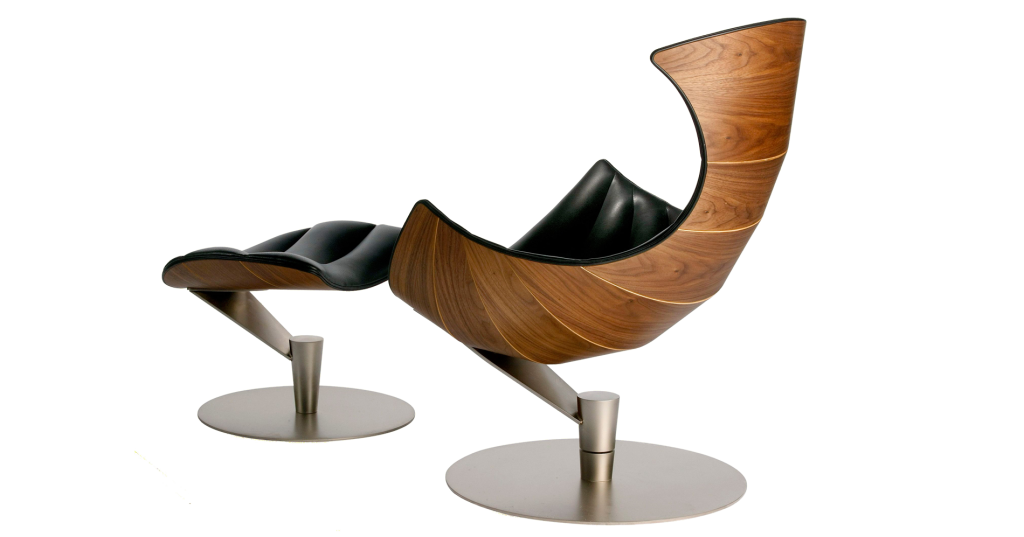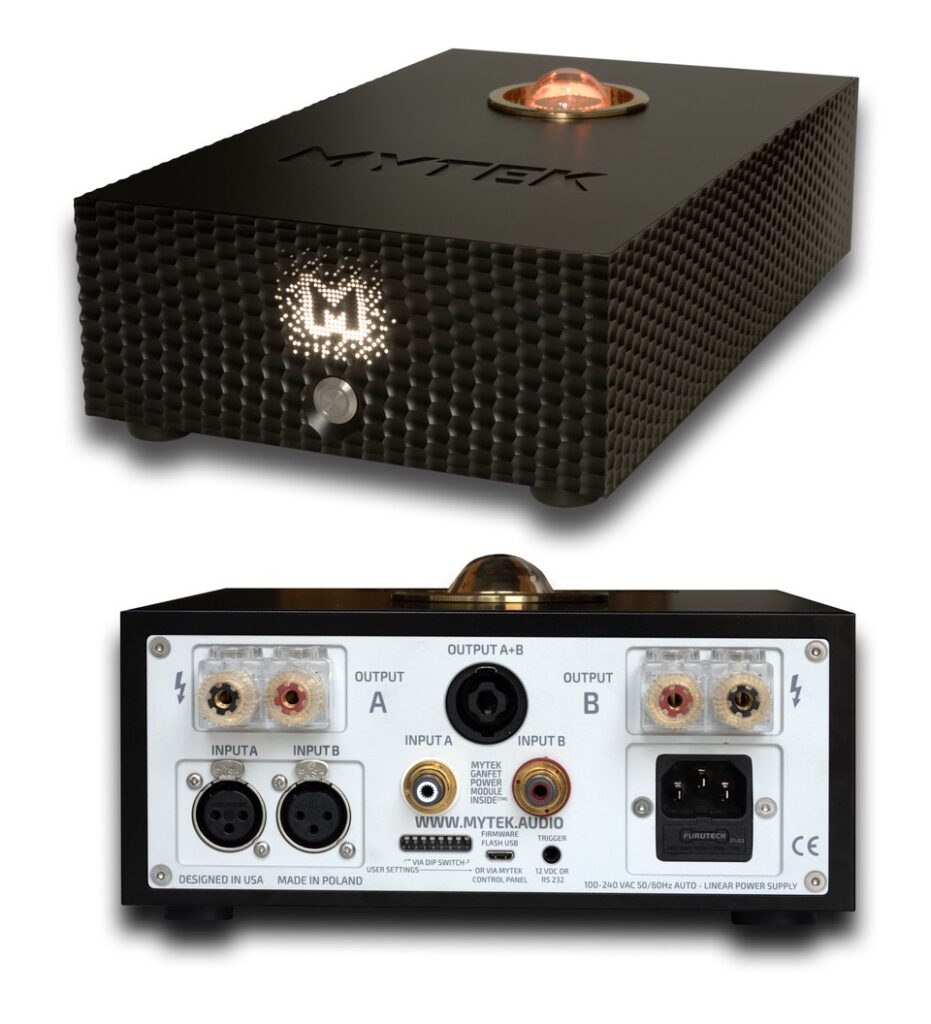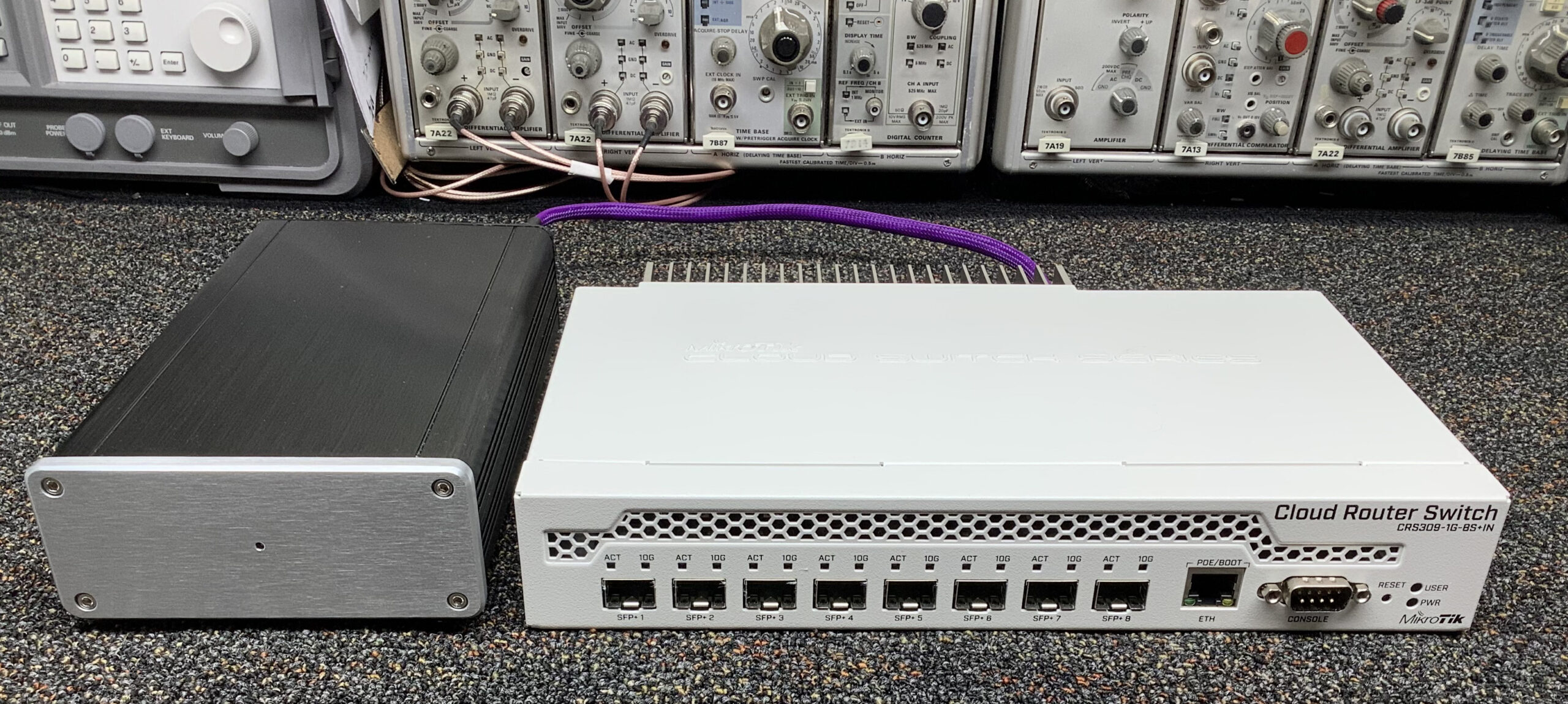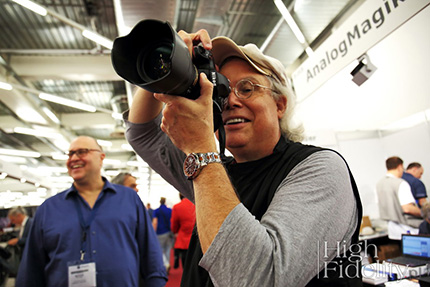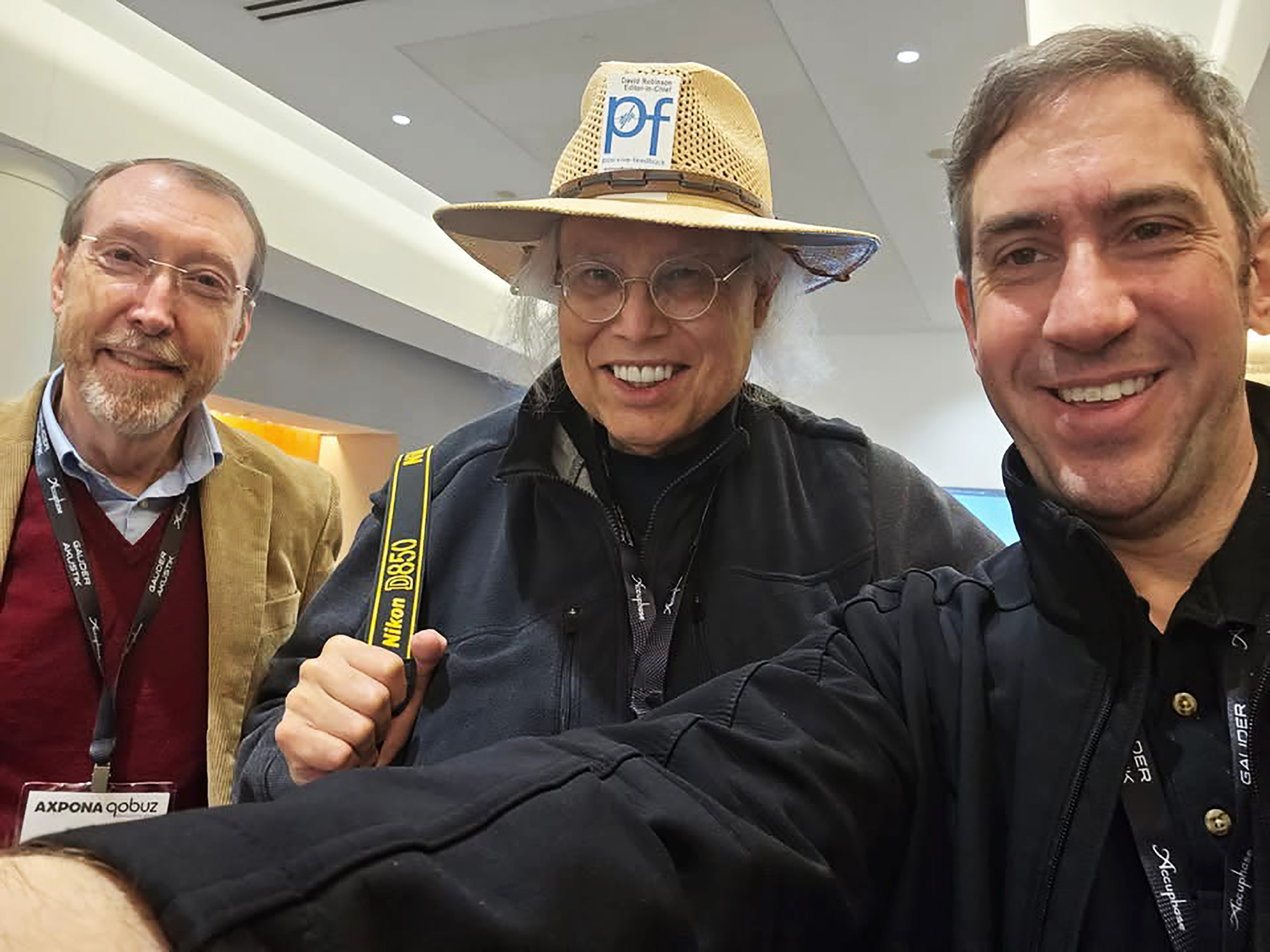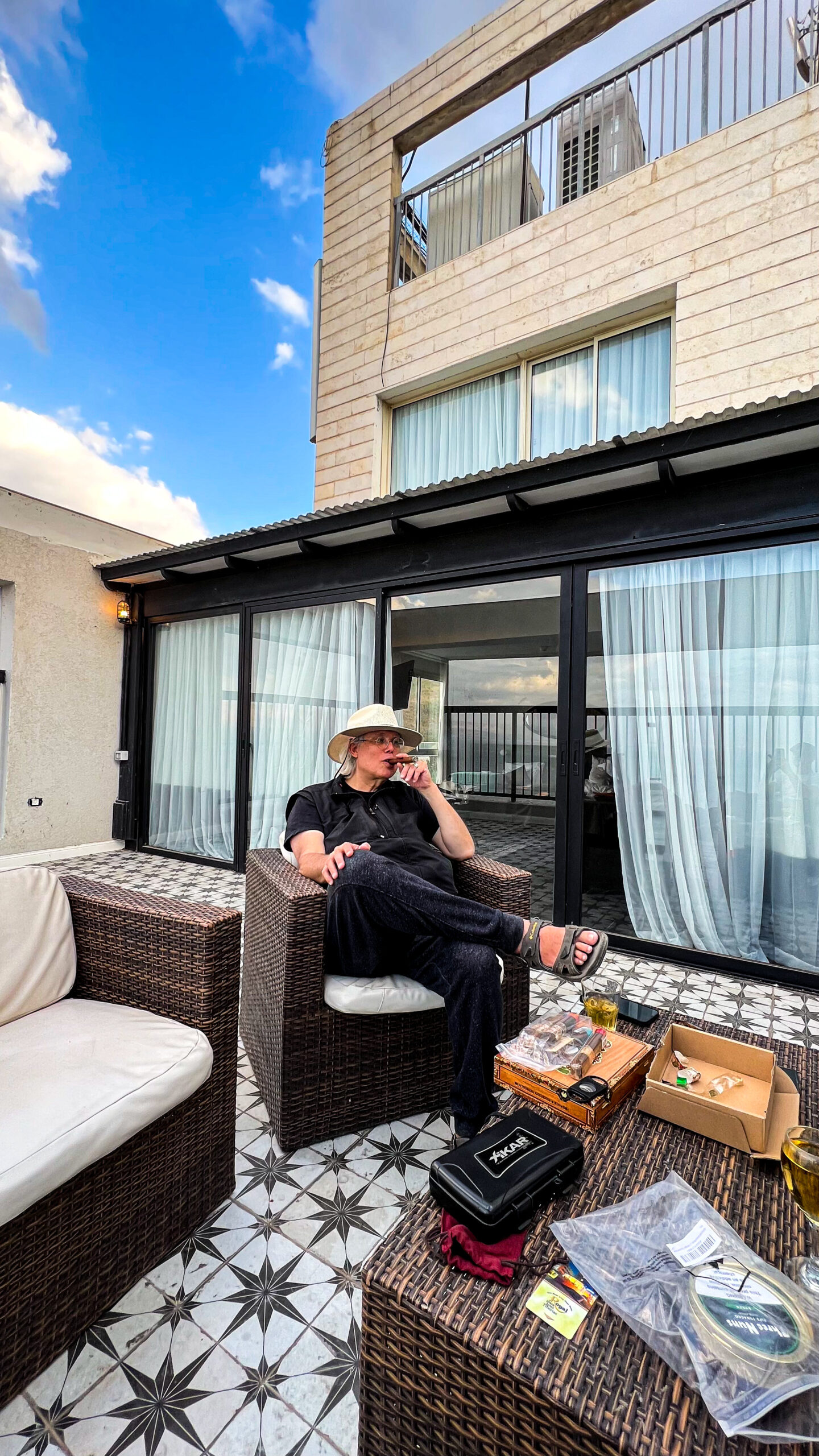
David W. Robinson, "Self-Portrait, Variation No. 3," Happy Valley, OR, 2019
Here's an outstanding product that audiophiles everywhere need to know about.
Keep reading…
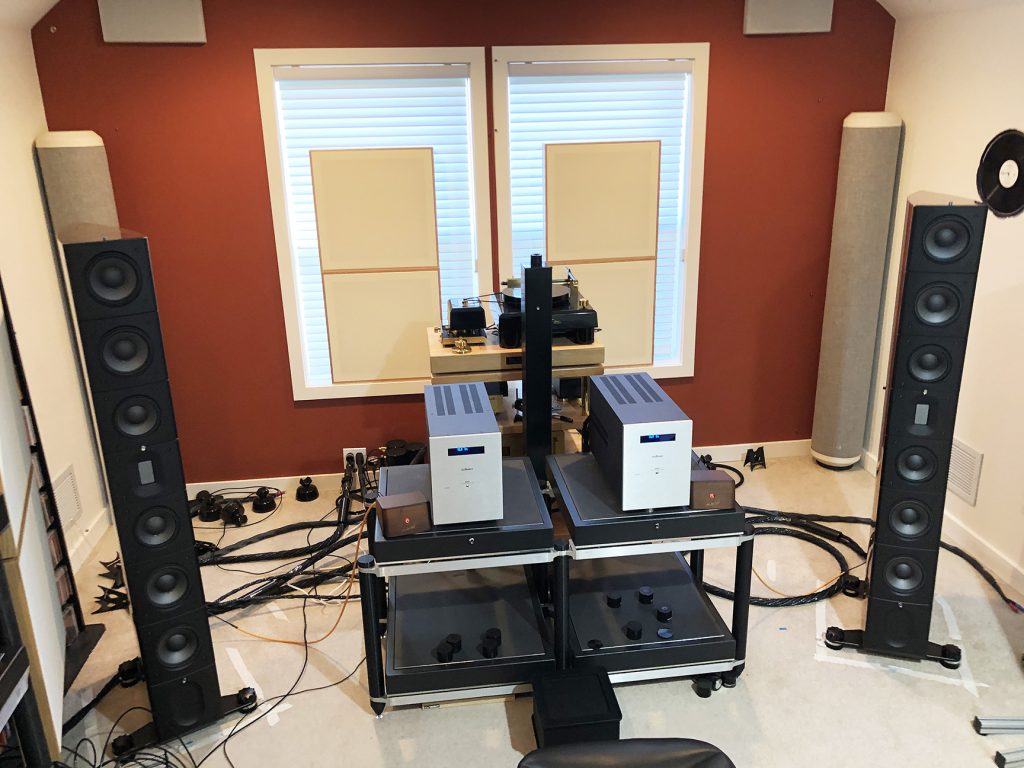
Newly upgraded, and the latest iteration of the far end of our stereo reference system: The Raidho TD 4.2 Loudspeakers, with Stillpoints Aperture II IIs, the Audionet MAX monoblock amps on Synergistic Research MiG 2.0 isolation feet, van den Hul Extenders, on a Critical Mass Systems rack, and with the newest generation Synergistic Research Galileo SX Cables, Active Ground Block SE, HFT X and 2.0 Acoustic Treatments, and the new Synergistic Orange Fuses. This latest generation of Synergistic Research components are intensely revealing...really glorious.
I've said it before, and I'll say it again: not every fine audio review needs to be…or should be…Moby Dick or The Brothers Karamazov. Sometimes short and sweet does it much better.
That's especially when an audio component doesn't require break-in. Then you can get pretty directly to the conclusion.
Enter the Stillpoints Aperture II.
Background

Bruce Jacobs: a portrait. Happy Valley, OR, 2019
Bruce Jacobs has been an audiobud for quite a while now, and the Stillpoints line makes up a significant percentage of the isolation systems that we use here at PF River City-and-up-the-hill. Their ESS Grid Racks have been a staple for years in our stereo reference room, where they have been a real asset to me in listening evaluations.
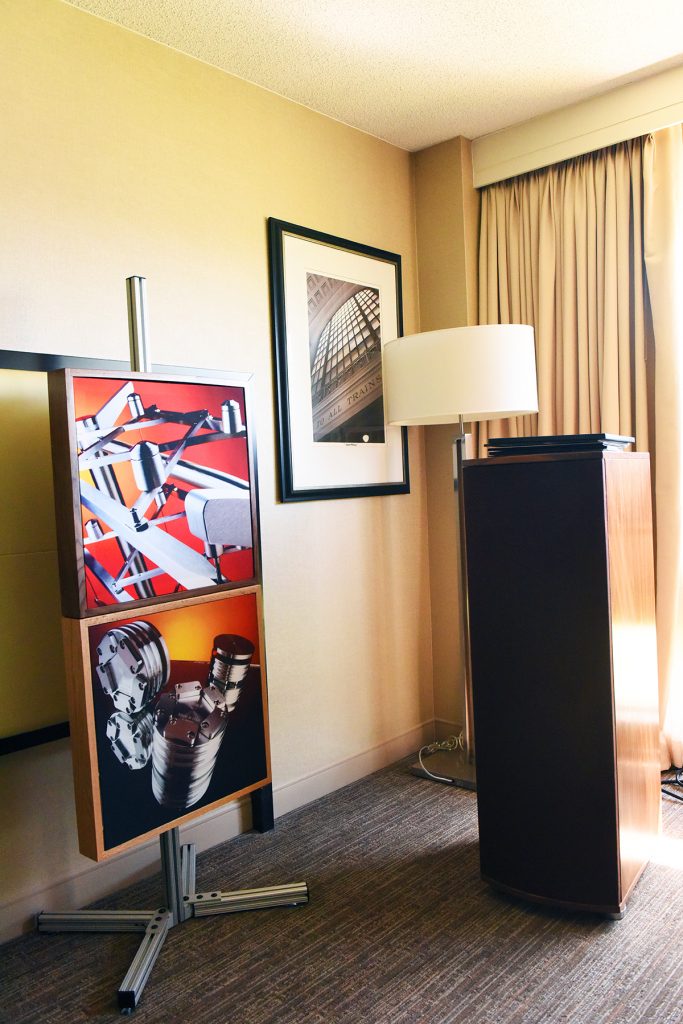
In the eXemplar Audio/Stillpoints room at AXPONA 2017, with the ApertureII s in action. Note that it's possible to order Aperture IIs with your own images screened onto the Aperture fabric.
A few years back, Stillpoints came out with an acoustic product that caught my eye and ear at several shows. This was their Aperture acoustic panels. (These are now patented.) In the often crowded confines of show rooms, they seemed to provide a noticeably more spacious presentation than I would have expected under those circumstances. So Paul Wakeen, Bruce, and I discussed getting a set of Apertures here to me at PF.
Unfortunately, this took quite a bit longer than I thought it would. For various reasons, Stillpoints didn't finally get them to me here until late last year, and Bruce didn't arrive for the setup until late May of this year.
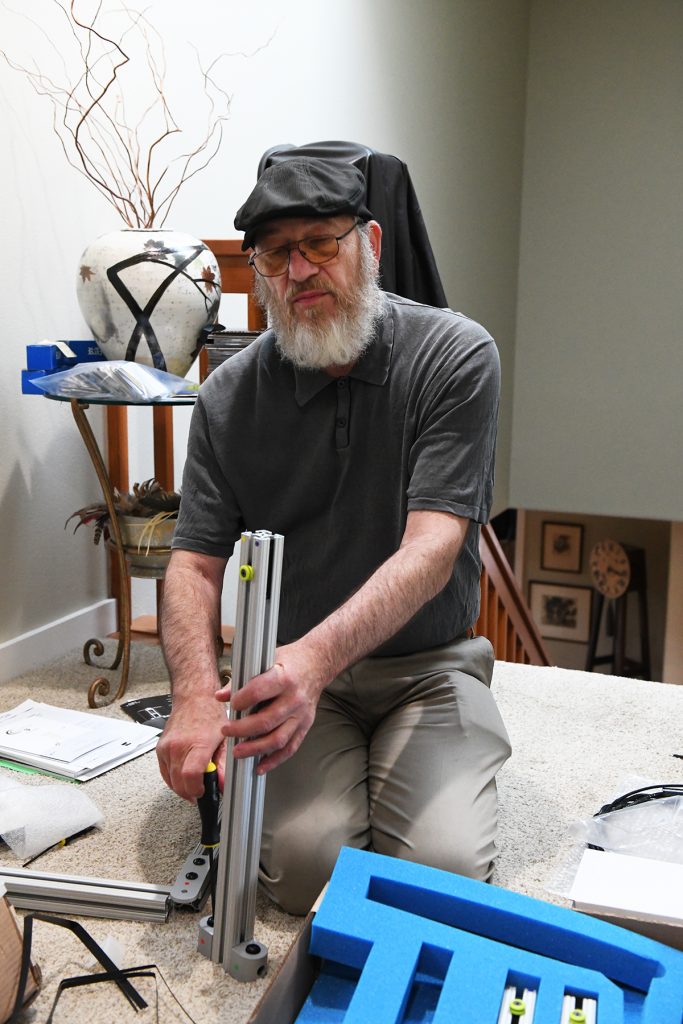
Bruce Jacobs of Stillpoints assembling the Aperture II stands
Once here, Bruce was able to get everything together and placed in a day. The Aperture II panels arrived pre-assembled, and the stands were simple to put together.
First, we listened to our reference stereo system without the Apertures, and then he began the placement.
The Apertures themselves consist of attractive wood panels with specially constructed acoustic baffles. These are not simply stuffed panels, though. According to Stillpoints, "The Stillpoints Aperture utilizes a blend of absorption materials, and a unique design of internal chambers to trap acoustic energy. The diffusion aspect of the Stillpoints Aperture breaks up the wave forms which will aid mid to high frequency absorption and reduction. The resonator aspect of the Stillpoints Aperture offers control of the lower frequencies only when it's needed. Thoughtful placement can achieve wonderfully controlled bass frequencies with dynamic lifelike quality and speed. With bass energy controlled, one can enjoy a light, lively, sparkling room of shimmering cymbals and explosive drum attacks, with wonderfully clear midrange and vocals at all amplitude levels.
The Stillpoints Aperture is the only acoustical product that will give you both absorption and diffusion at the first reflection points of a system. And you want both!"
Would I? I would see...by hearing.
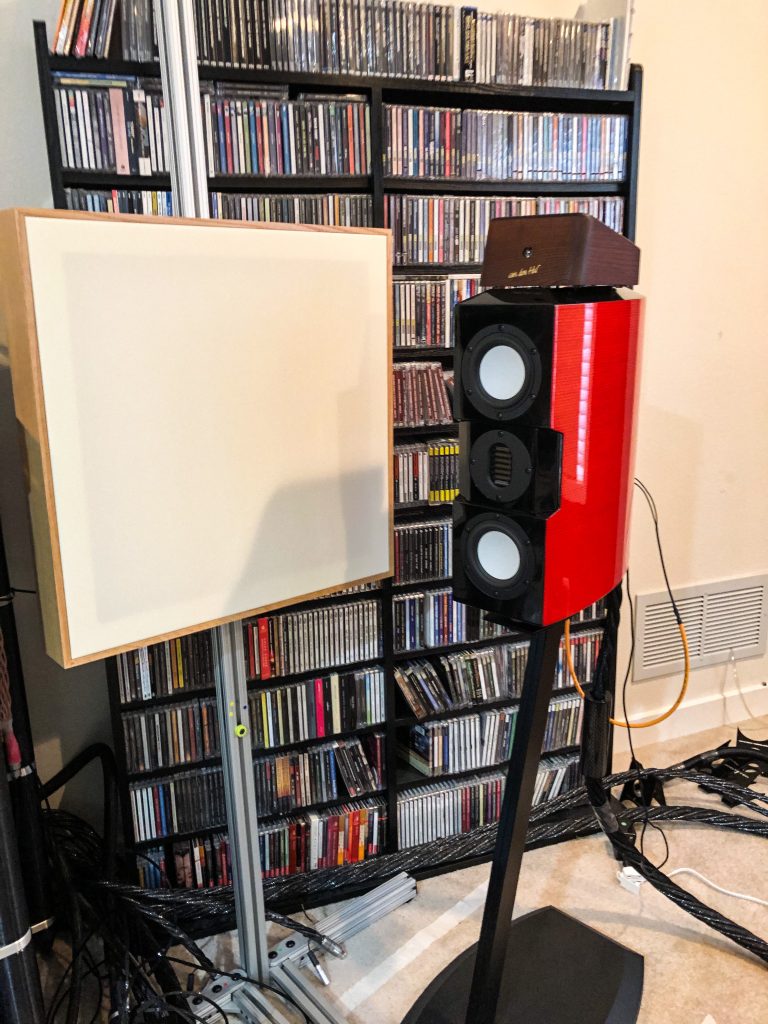
A single Aperture II on its stand next to the Evolution Acoustics Micro One monitor speaker
So, a combination of diffusion and resonance, which normally come in separate components. Bringing them together not only made the space and cost requirements for such improvements notably less, but also meant that you could find the ideal spot for both enhancements much more easily. Given the fact that many listening rooms have to live with dimensional constraints, this is a real plus for audiophiles.
More good news: Assembly was easy, with Bruce putting together the stands pretty quickly. They are strong, lightweight aluminum structures, and adjust to allow you to position and angle them without busting a gut. The idea is to find various critical first-reflection points in your listening room, and then place Apertures strategically to apply its unique diffusive/resonant qualities for maximum benefit.
As it turned out, Bruce started out by finding the obvious left and right first reflection points near our speakers. He started out with the Evolution Acoustics Micro One monitors, which is what we had in place at that time. Since these were monitors, they only required one Aperture panel per side. Some of the shifting was tight; there wasn't much elbow room on the left side. (Our SACD rack on that side is in the process of being moved now). It didn't take long for him to dial in the ideal placement…he did that by ear, shifting the Apertures, and then listening to the results, until he was satisfied with the results.
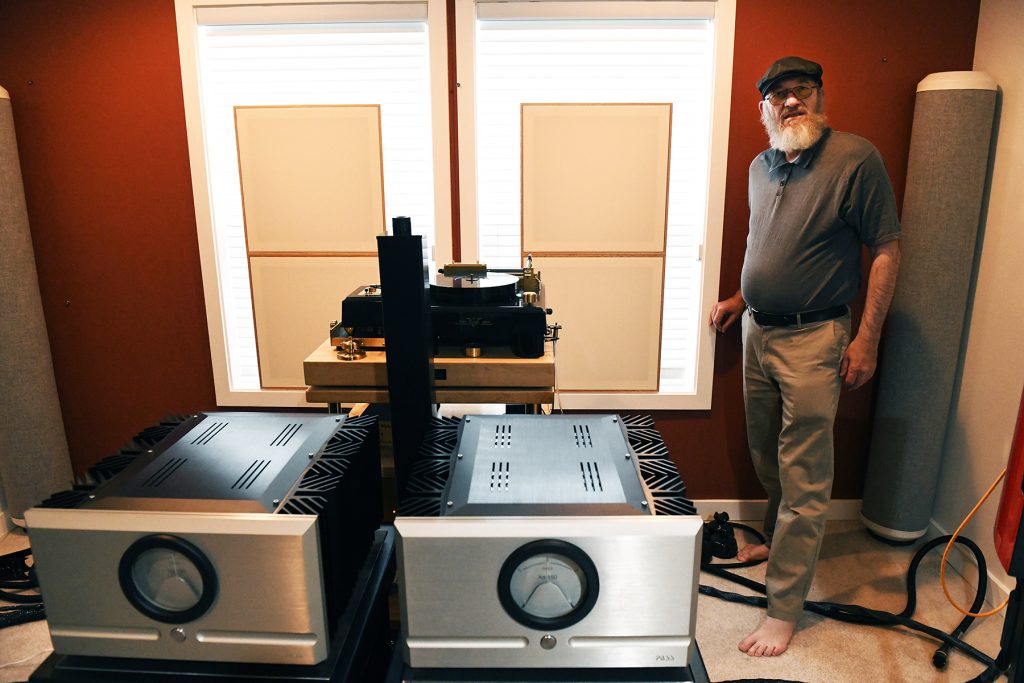
Bruce Jacobs with the two stacks of ApertureII s in front of our rear windows
Then he added two pairs of Aperture IIs between the speakers, in front of the double windows and their Hunter Douglas window coverings. They are sitting comfortably on top of one other on the wide window ledge behind our Walker Audio Proscenium Black Diamond Level V Reference Turntable System. It's very stable, and required no special mounting or stands. That took the glass and windows out of the first-reflection equation.
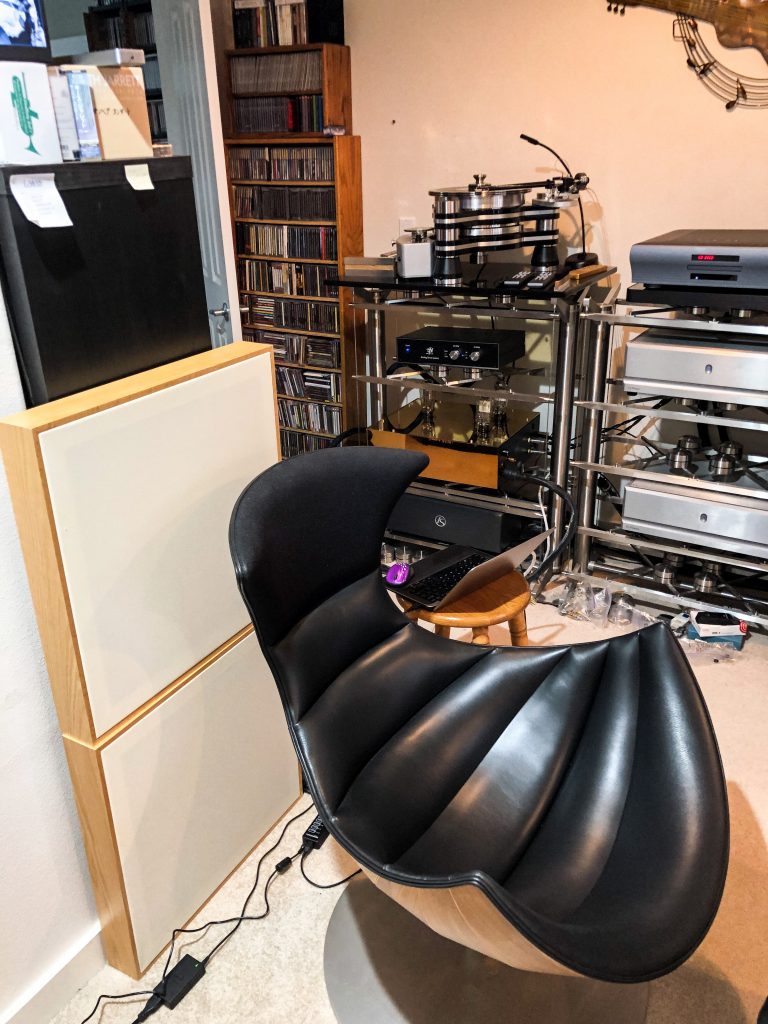
Our GamuT Lobster Audiophile Listening Chair with a two-piece stack of Aperture IIs immediately behind it
Another set of two Apertures were stacked immediately behind my GamuT Lobster Audiophile Listening Chair, one on top of the other. This further ameliorated the reflections at the point of critical listening, beyond the gain that the unique acoustical dampening design of the head of the Lobster Chair itself.
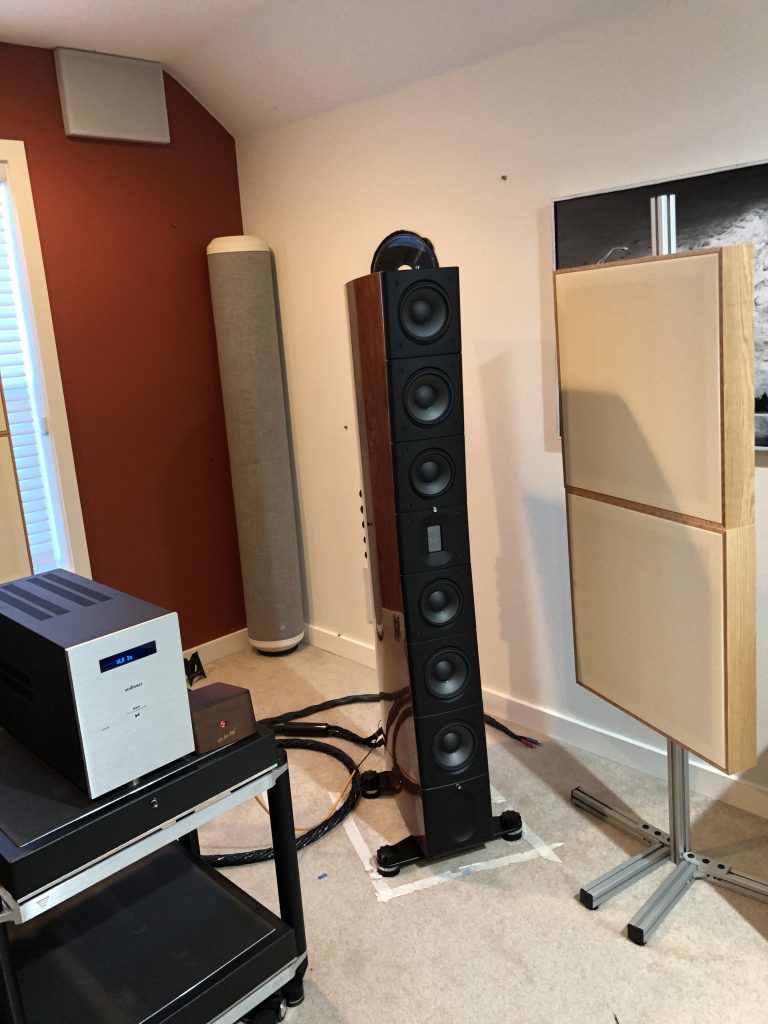
Later in 2019: The Raidho TD 4.2 Loudspeakers, Audionet Max monoblock, Critical Mass Systems Rack, van den Hul Extender, Synergistic Research HFT 2.0's, and Synergistic Research SX Loudspeaker cables
When we went from the Micro Ones to the larger, taller Raidho TD 4.2 Loudspeakers, redesigned and improved by Benno Meldgaard, I shifted the first Aperture and added a second to cover the larger presentation of the 4.2's. We also shifted the amplification from the PASS Labs Xs 150's, which were returned to PASS Labs, and went to my default Audionet MAX monoblocks (see initial photograph).
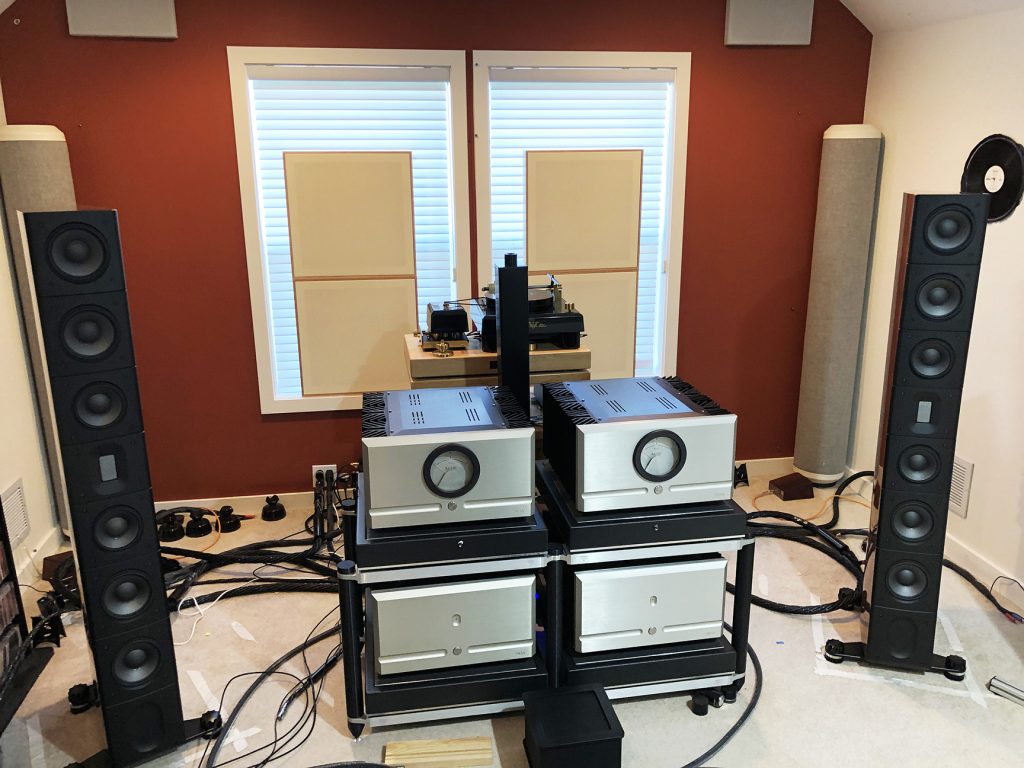
Before the return of the PASS Labs Xs 150's, we had an opportunity to hear the Aperture IIs with the 150's and the Raidho TD 4.2's…magnificent!
This gave me the opportunity to hear the Aperture IIs in both single and double configurations, with the Evolution Acoustics Micro Ones and Raidho TD 4.2's, and with Kubala-Sosna Elation! and Synergistic Research SX cables.
The Sound

"The Angel who Listens," by Dan Zimmerman
I can cut right to the chase here, since break-in was not a factor.
The Stillpoints Aperture IIs wrought an immediate and quite definite improvement to the sound of our reference stereo system, and did so regardless of changes in sources/electronics/cables.
For me, it was clear that the Aperture IIs opened the music laterally, made the soundfield deeper, and improved the focus and detail of the sonic presentation. I had already seen earlier improvements by the use of Synergistic Research components (e.g., Atmosphere Infinity, Tranquility Bases, Active Ground Block SE, HFT's of various generations, BlackBox, MiG's, all amazing components), and the van den Hul Extender (another must-have device in my experience), but the Apertures brought an additional openness, definitely enhancing the sense of wrap-around at the listening position quite wonderfully. It worked and played well together with other system enhancements, so that I didn't have any sense of subtraction at all.
Quite the contrary. Synergistic heaven!
Let me repeat that: the Aperture IIs were entirely a plus, and enhanced the sonic improvements of all other designs in our listening room. More gain; no pain.
And the sonic advancement was immediate, instantly apparent. Walls moved back; the sense of depth was noticeable; and detail improved, without any loss of dynamics. The shift was further down the road from mere soundstage to soundspace.
How can you beat that?
Conclusion
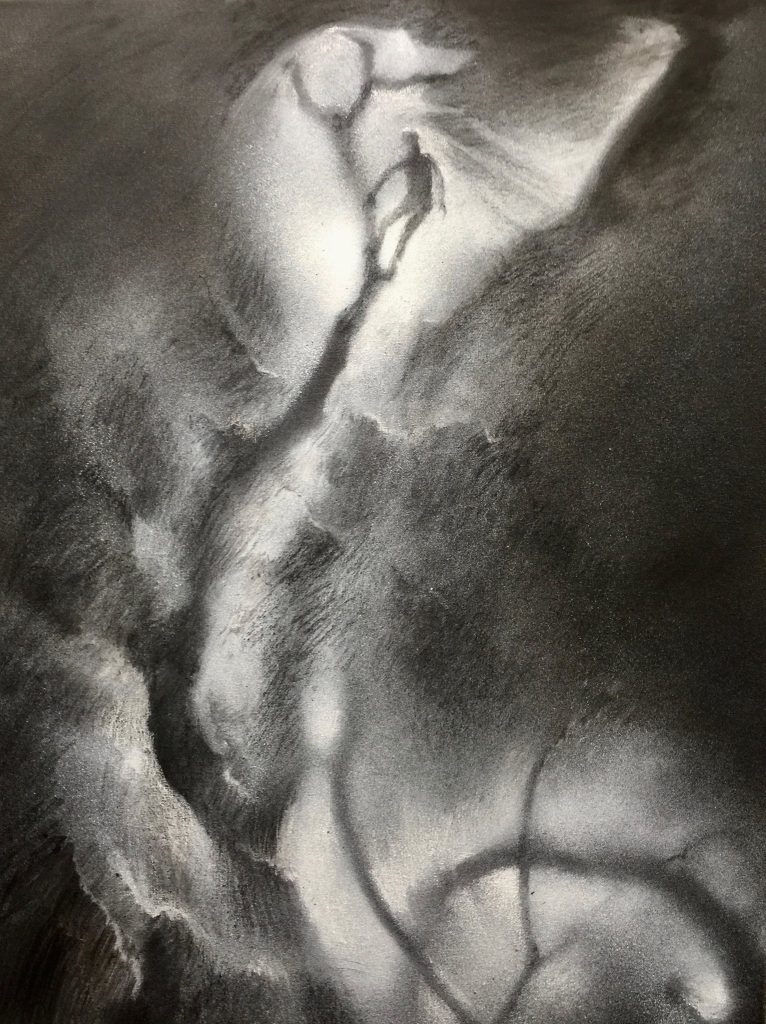
"Light Up There," by Dan Zimmerman
Having heard the Apertures at shows over a few years, and being impressed with them there, I was much more taken with them when they were applied to the intimately known setting (20 years+) in my own listening room.
The outcome?
You couldn't tear the Stillpoints Aperture IIs away from me if you tried. And I would venture to say that anyone who gave them a try, even in a smaller space, would get results similar to what I've experienced here. If this is a rave, then so be it!
Amigos, you can put the Stillpoints Aperture IIs on your very short list of system-enhancements-that-I-must-have…guaranteed.
Expect to see them on my list of Brutus Awards for 2019, to be published soon.
Price: Varies; contact your local dealer or Stillpoints for specific configurations and pricing
Stillpoints
573 County Road A, Suite 103
Hudson, WI 54016
Sales contact: Bruce Jacobs or Paul Wakeen
651.204.0605
Orders: [email protected]
All photographs and image processing by David W. Robinson, except "Light Up There" and "The Angel who Listens," drawings by Dan Zimmerman.




